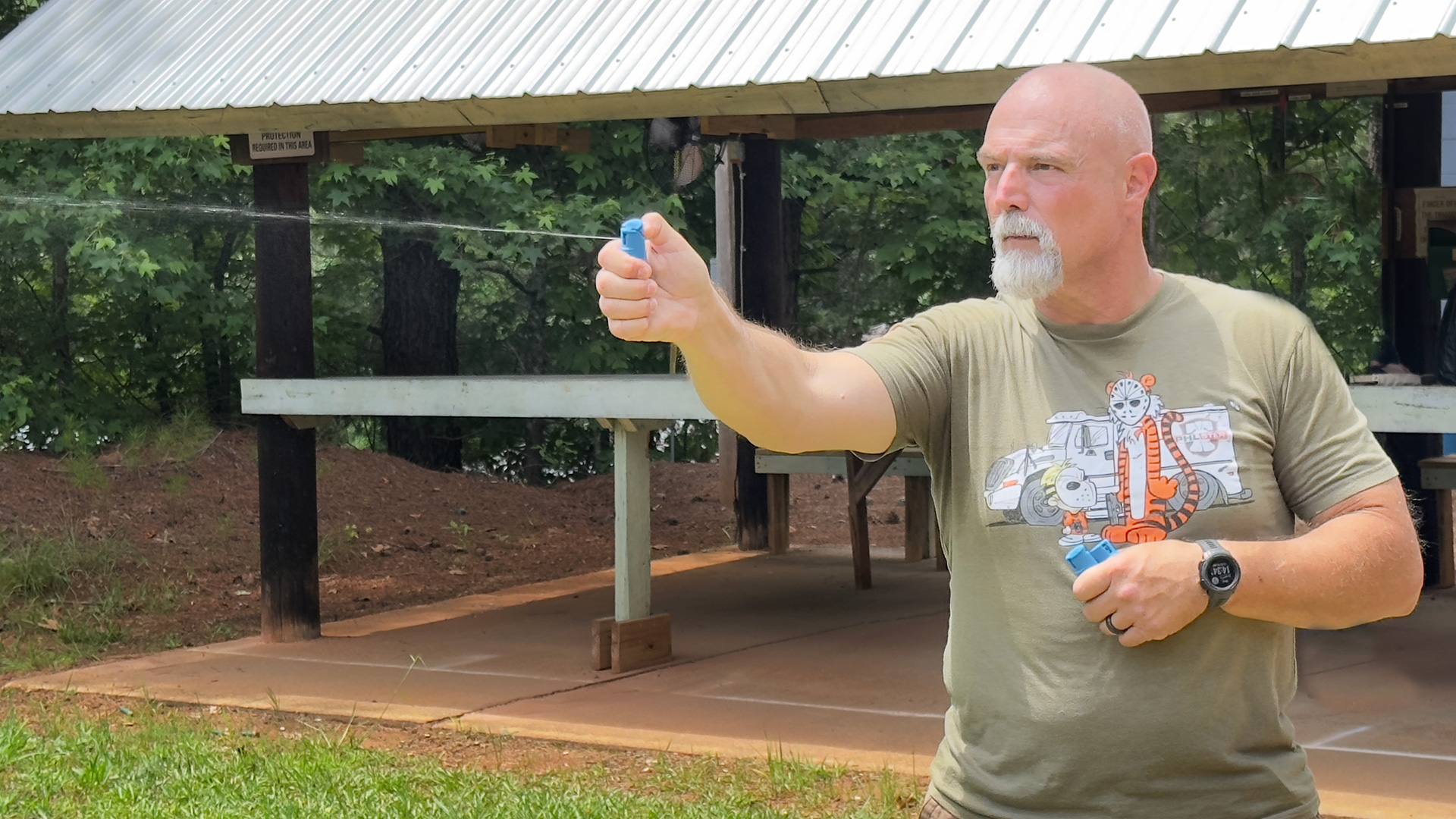All of us at Shooting Illustrated are big advocates for an armed citizenry. We know that the very act of having a firearm on you when you need one can solve the problem better than four out of five times. However, not every problem we encounter has a lethal-force solution. We need to be able to deal with those who might do us the kind of harm that stops short of lethal force, and that’s where a less-lethal option like pepper spray comes in handy.
This leads to another problem, though, as most pepper spray is designed for use by law enforcement, and most of the instruction available for pepper spray reflects that fact. However, law enforcement has a different use for pepper spray than the armed citizen. Police and other agencies see pepper spray (or OC spray, as it’s also known) as a means to quell an unruly suspect before putting handcuffs on them and arresting them.
The armed citizen, on the other hand, does not have that duty. Our job is to avoid trouble, but if trouble is unavoidable, we solve the problem at hand by using an appropriate level of force. This is where OC spray comes in handy for the armed citizen, because it gives us a viable way to deal with a less-lethal threat in an effective manner.
The best way I’ve heard this described is from law enforcement officer and firearms trainer Chuck Haggard: “Carrying pepper spray gives you an option between hard words and a gun.” Chuck is one of the foremost OC trainers out there, so when he taught a class hosted by The Complete Combatant, I jumped at the opportunity to better understand this vital tool in my self-defense toolbox.
What Pepper Spray Does and Doesn’t Do
“When it comes to pepper spray,” Haggard said, “there are three things you want to look for. The first is the MCC: or Major Capsaicin Content. Capasicin is the active ingredient in pepper spray, and 1.3 or 1.4 percent strength is preferred, with .7 percent being the bottom end of effectiveness. Sprays above 1.4 percent strength have issues with solid capsaicin grains clogging the nozzle.”
“Secondly,” Haggard went on, “Look for an expiration date or a creation date. The chemicals inside the canister won’t lose their potency, but the propellant that delivers them will slowly leak out over time. The canister may feel full, but no propellant means it goes nowhere.”
“Lastly,” he said, “Make sure it has a spray pattern and spray type (gel, foam, etc) stated on the packaging or the canister. When it comes to spray patterns, a stream is less affected by wind as it is more forceful), while cone patterns and gel are shorter ranged and more affected by wind. Gel OC spray has limited effect on the respiratory system and delayed activation. Mace is a tear gas such as CS or CN and it works well to break up a riot, but it is not as effective as a defensive tool as there is a longer delay on its effects. Also avoid blends of Mace and pepper spray, as doing so diminishes the effects of both the CS/CN and OC.”
Spray And Pray?
Cone pattern sprays are affected by wind more than stream pattern sprays are.
Spray pattern also matters for range, Haggard said. Cone pattern sprays work well for law enforcement to flush suspects out of hiding, as area denial tools or to break up bar fights, but that wider spray limits their effectiveness to larger canisters which may be harder to conceal. Pom pepper spray has become very popular in recent years because it is small and easy to carry around, but it is not without its limitations, says Haggard, as he considers it to be the “pocket pistol” of pepper sprays, and he also has some thoughts about gel formula pepper sprays.
“The effects of OC come after the first blast hits your face. We’re good at protecting our eyes. We can blink them shut in literally the blink of an eye, so with gel sprays, that effect is limited or non-existent as the gel takes quite a while to work its way into your system. He also talked more about cone-shaped sprays.
“In 300 to 400 uses of OC on the job with cone-shaped mists, there is a night and day difference between taking a direct hit versus incidental blowback,” he said/ “I’ve never seen incidental contact with OC disable the person using the spray.”
The decision to carry concealed or not is a personal decision, as is the decision to add pepper spray into your self-defense setup. For me, though, I recognized quite awhile ago that I was too old to go hands-on anymore, and introducing a firearm into situations where it wasn’t needed was a good way to get into a lot of trouble. Carrying pepper spray allows me, as Haggard said, to have an option between forceful commands and “BANG!” and I like having that option ready to go at a moment’s notice.
Read the full article here

